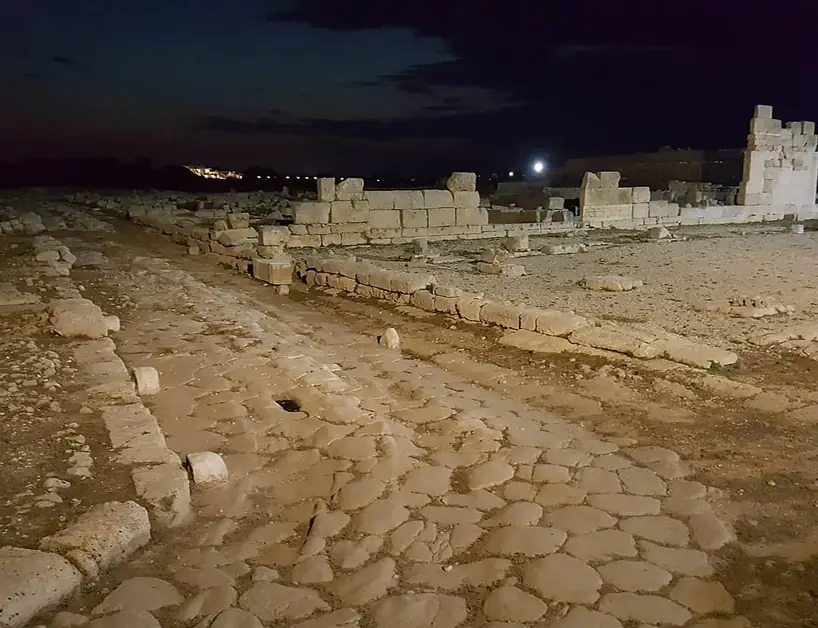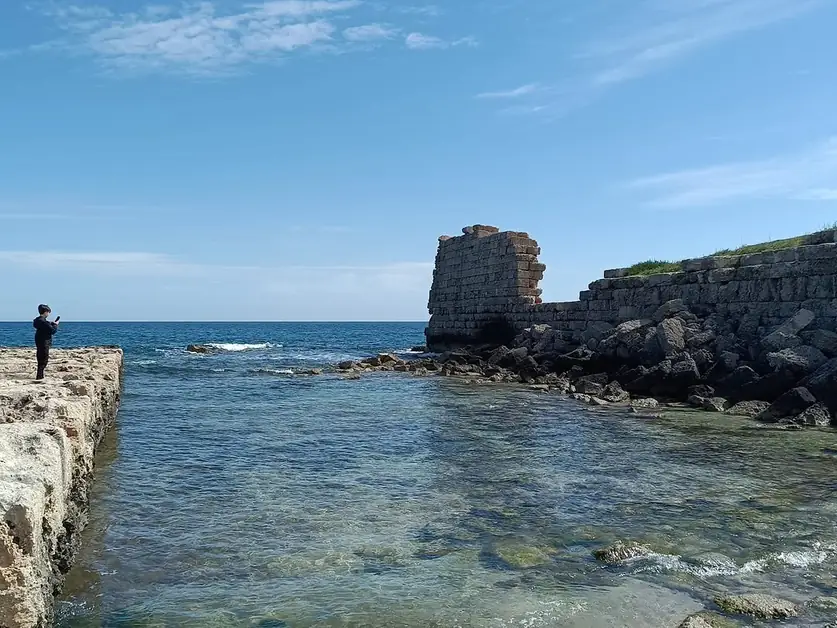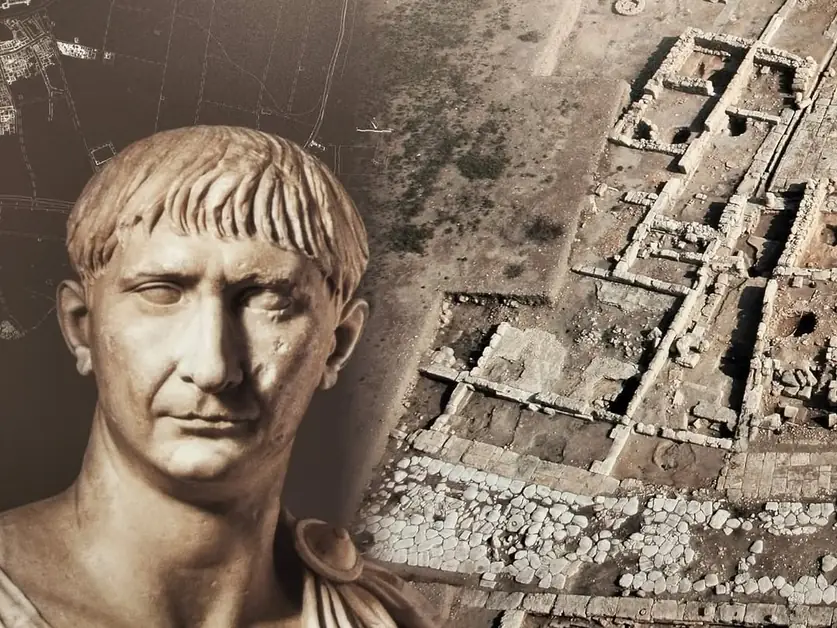Discover the mysterious submerged port of Egnazia
The submerged port of Egnazia is an ancient Roman landing in Puglia, crucial for trade in the Mediterranean.

What is the submerged port of Egnazia?
The submerged port of Egnazia is an ancient Roman landing located in front of the archaeological site of Egnazia, near the Adriatic coast of Fasano, in Puglia. Today, much of the original structure lies beneath sea level, hidden by sandy bottoms and the clear waters of the area. It is easily reachable from the Archaeological Park of Egnazia, via short paths leading to the beach.
What was the historical importance of the submerged port of Egnazia in the Adriatic?
The port of Egnazia was a crucial hub for trade in the ancient Mediterranean. Ships laden with cereals, wine, oil, ceramics, metals, and artifacts from throughout the Roman Empire and the coasts of the East arrived and departed from here. Its strategic position, corresponding to the Via Traiana, made Egnazia essential for trade between Italy, Greece, and Asia Minor.
What maritime routes connected Egnazia to other ports in the Adriatic and the Mediterranean?
From the port of Egnazia, routes led to Brindisi, Bari, Ancona, Split, and, through the Strait of Otranto, to the great Greek cities and the Illyrian coasts. Other routes led to Syracuse and Carthage. Merchants used the Via Traiana to transport goods to Benevento and Rome, making this area one of the most active hubs of the ancient Adriatic.
What do we know today about the submerged structures of the port of Egnazia?
Archaeologists have identified remains of docks, quays, artificial breakwaters, deposits, and warehouses now submerged, thanks to dives and underwater surveys. Some of the recovered materials are displayed in the archaeological museum of Egnazia. Recent studies suggest that the port had an ingenious system for protecting against storm surges and spaces designated for shipbuilding and repair.
What mysteries and legends surround the submerged port of Egnazia?
Even today, many details about the structure and daily life of the port remain mysterious. Tales are told of ships lost during storms and precious cargoes never found. Some popular stories speak of foreign merchants arriving in Egnazia and mysterious submerged statues that protected the city. Archaeologists continue to search for clues to unveil the secrets hidden beneath the sea.
Is it possible to visit the site of the submerged port of Egnazia?
The area can be observed from the beach or by booking excursions with specialized guides. Some operators offer snorkeling tours, allowing visitors to see the rocks and submerged remains on calm sea days. At the museum of Egnazia, reconstructions, videos, and models are available to help imagine the ancient port and its activities.
What can be seen in the archaeological museum of Egnazia regarding the port?
The museum displays amphorae, ceramics, navigation tools, coins, and votive objects found during underwater archaeological campaigns. Panels, photographs, and scale models illustrate the port structure, trade, and traffic of goods. Thanks to these testimonies, one can understand the life of the sailors and merchants who frequented Egnazia.
What were the main goods traded at the port of Egnazia?
The port handled the loading and unloading of olive oil, wine, cereals, locally and Greek-produced ceramics, textiles, spices, and precious metals. The variety of goods reflected the richness of trade routes and the presence of foreign merchants. Salted fish was also in high demand, as were everyday utensils.
What historical accounts describe the port of Egnazia?
Latin and Greek writers such as Horace and Pliny the Elder mention Egnazia in their texts, highlighting the port's central role as a mandatory stop for travelers on the Via Traiana. Ancient sources speak of continuous flows of ships, merchants, pilgrims, and Roman officials heading towards the East.
What makes the submerged port of Egnazia unique compared to other ports in the Mediterranean?
Unlike other Roman ports, Egnazia's is largely submerged, offering the opportunity to explore the underwater history of the Mediterranean. The vast archaeological area, still under study, attracts diving enthusiasts and marine archaeology. Its proximity to the terrestrial archaeological site makes the visit a complete and interactive experience.
What tourist activities can be combined with a visit to the submerged port of Egnazia?
In addition to the museum and archaeological site, guided dives, snorkeling, kayak tours, and coastal walks can be organized. Local restaurants offer fresh fish dishes typical of Puglia's tradition. Nearby farms offer tastings of local products and workshops on ceramics processing.
How to get to the submerged port of Egnazia and what services are available?
The site can be reached by car from the SS16 Bari-Brindisi, exit Fasano/Savelletri. Parking, guiding services, bars, and hotels are available. Visitors arriving by train can take buses or shuttles from the stations of Fasano and Ostuni. It is advisable to book in advance for underwater excursions and group activities.
What are the recommended stops for a complete itinerary between the submerged port of Egnazia and nearby locations?
It is recommended to start with a visit to the archaeological museum, proceed with a walk in the Egnazia Park, then reach the coast to observe the submerged area. From here, it is possible to move towards Torre Canne or Ostuni to complete the journey through archaeology, history, and nature. Nearby, you can also find the Dolmen of Montalbano and the Torre Guaceto Nature Reserve.
Are there specialized guided tours of the submerged port of Egnazia?
Several travel agencies offer themed tours dedicated to the history of the port, with archaeological guides, diving, snorkeling, and workshops on ancient navigation. Detailed information can be found at the tourist office in Fasano, Egnazia, or through the online portals of local associations.
What practical advice is there for tourists wishing to visit the submerged port of Egnazia?
Before leaving, check the museum and excursion hours, monitor sea conditions, and book activities in advance. Bring appropriate clothing and snorkeling gear, as well as an underwater camera to capture the submerged remains. Inquire about current regulations for underwater visits.




